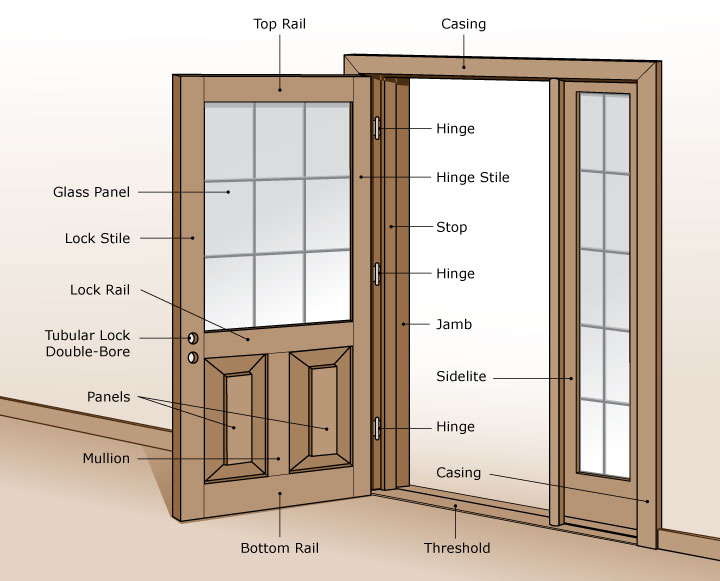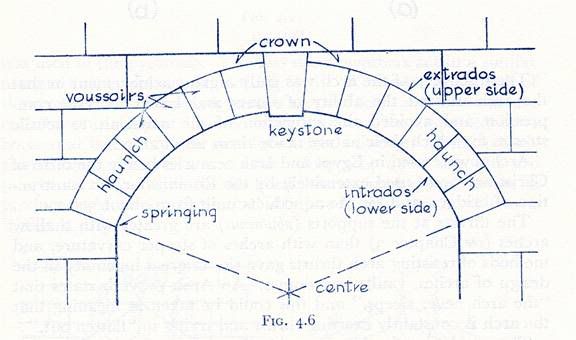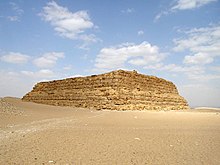General
Squinch: a straight or arched structure across an interior angle of a square tower to carry a superstructure such as a dome.
dolmen: also known as a portal tomb, portal grave, or quoit, is a type of single-chamber megalithic tomb, usually consisting of three or more upright stones supporting a large flat horizontal capstone (table), although there are also more complex variants. Most date from the early Neolithic period (4000 to 3000 BC). Dolmens were usually covered with earth or smaller stones to form a barrow, though in many cases that covering has weathered away, leaving only the stone "skeleton" of the burial mound intact.
Menhir (French, from Middle Breton: men, "stone" and hir, "long"[1]), standing stone, orthostat, or lith is a large upright standing stone. Menhirs may be found singly as monoliths, or as part of a group of similar stones. Their size can vary considerably, but their shape is generally uneven and squared, often tapering towards the top. Menhirs are widely distributed across Europe, Africa and Asia, but are most numerous in Western Europe; in particular in Ireland, Great Britain and Brittany. There are about 50,000 megaliths in these areas,[2] while there are 1,200 menhirs in northwest France alone.[3] Standing stones are usually difficult to date, but pottery found underneath some in Atlantic Europe connects them with the Beaker people. They were constructed during many different periods across pre-history, erected as part of a larger megalithic culture that flourished in Europe and beyond.
Islamic Architecture
Mehrab: A niche in the wall of a mosque or a room in the mosque that indicates the direction of Mecca.
Muqarnas: An architectural ornamentation reminiscent of stalactites, muqarnas developed around the middle of the 10th century in northeastern Iran and almost simultaneously — but seemingly independently — in central North Africa; they take the form of small pointed niches, stacked in tiers which project beyond lower tiers, commonly constructed of brick, stone, stucco, or wood, clad with painted tiles, wood, or plaster, and are typically applied todomes, pendentives, cornices, squinches and the undersides of arches and vaults.
Prehistoric
dolmen: also known as a portal tomb, portal grave, or quoit, is a type of single-chamber megalithic tomb, usually consisting of three or more upright stones supporting a large flat horizontal capstone (table), although there are also more complex variants. Most date from the early Neolithic period (4000 to 3000 BC). Dolmens were usually covered with earth or smaller stones to form a barrow, though in many cases that covering has weathered away, leaving only the stone "skeleton" of the burial mound intact.
Menhir (French, from Middle Breton: men, "stone" and hir, "long"[1]), standing stone, orthostat, or lith is a large upright standing stone. Menhirs may be found singly as monoliths, or as part of a group of similar stones. Their size can vary considerably, but their shape is generally uneven and squared, often tapering towards the top. Menhirs are widely distributed across Europe, Africa and Asia, but are most numerous in Western Europe; in particular in Ireland, Great Britain and Brittany. There are about 50,000 megaliths in these areas,[2] while there are 1,200 menhirs in northwest France alone.[3] Standing stones are usually difficult to date, but pottery found underneath some in Atlantic Europe connects them with the Beaker people. They were constructed during many different periods across pre-history, erected as part of a larger megalithic culture that flourished in Europe and beyond.
Islamic Architecture
Mehrab: A niche in the wall of a mosque or a room in the mosque that indicates the direction of Mecca.
Muqarnas: An architectural ornamentation reminiscent of stalactites, muqarnas developed around the middle of the 10th century in northeastern Iran and almost simultaneously — but seemingly independently — in central North Africa; they take the form of small pointed niches, stacked in tiers which project beyond lower tiers, commonly constructed of brick, stone, stucco, or wood, clad with painted tiles, wood, or plaster, and are typically applied todomes, pendentives, cornices, squinches and the undersides of arches and vaults.
Egyptian Architecture
Mastaba: is a type of ancient Egyptian tomb in the form of a flat-roofed, rectangular structure with outward sloping sides that marked the burial site of many eminent Egyptians of Egypt's ancient period. Mastabas were constructed out of mud-bricks (from the Nile River) or stone. In the Old Kingdom, kings began to be buried in pyramids instead of mastabas, although non-royal use of mastabas continued for more than a thousand years.
Pylon is the Greek term for a monumental gateway of an Egyptian temple (Egyptian bxn.t in the Manuel de Codage transliteration[1]). It consists of two tapering towers, each surmounted by a cornice, joined by a less elevated section which enclosed the entrance between them.[2] The entrance was generally about half the height of the towers. Contemporary paintings of pylons show them with long poles flying banners.Roman
In ancient Rome, Thermae (from Greek thermos, "hot") and balnea (Greek βαλανείον, balaneion) were facilities for bathing. Thermae usually refers to the large imperial bath complexes, while balneae were smaller-scale facilities, public or private, that existed in great numbers throughout Rome. |
| Brick Shapes |
 |
| Wood Section |
 |
| Door Terminology |
 |
| Window Terminology |
Window Types
 |
| Arch Terminology |
Cloister
Barrel Vault
Cloister Vault
Conical Vault
Groin vault
Rampant Vault
List of Vaults
eg of igneous rock
granite
metamorphic rock
marble, slate
sedimentary
limestone, sandstone


No comments:
Post a Comment